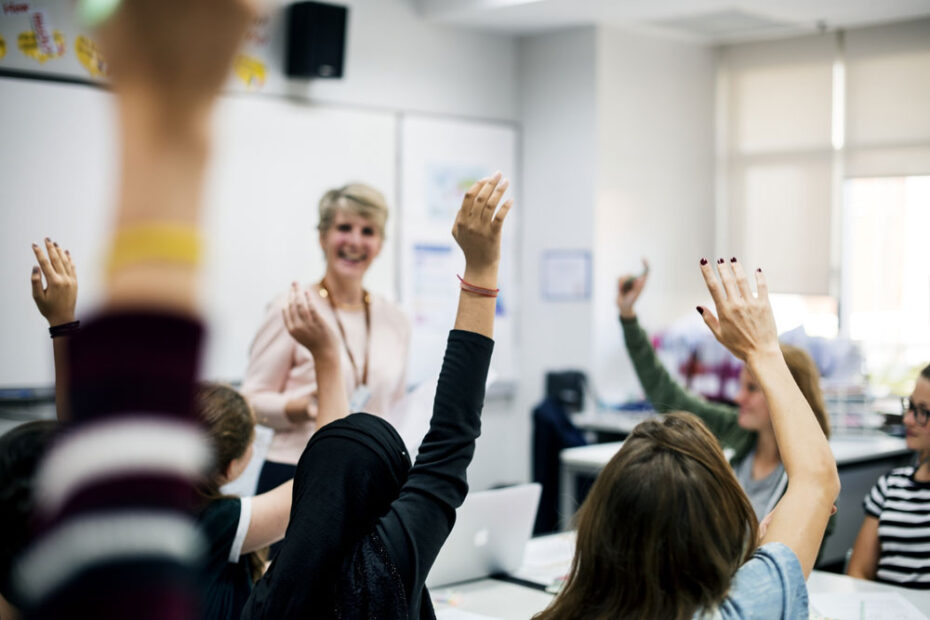A core component of Educational Directions is the “Rhythm of the Learner Year” – ROLY. This approach emphasizes that proficient performance by all students requires a focus on high-level student engagement in optimum learner and performer work. In addition, it emphasizes that the level and nature of this work changes as students move from one period of the learner year to the next. In the Opening Period, for example, the focus is on equipping
all students for success by enabling all students to develop the competencies that will be needed to be successful in that classroom. After the Opening Period, students enter what’s called the Formative Period, and the focus is on enabling all students to be proficient learners and developing the competencies needed to be independent and lifelong learners.
This is also the period when students are introduced to the tasks they will face when they take state assessments and later make successful transitions the next level. When students return from the winter break they enter the Calibrating Period, and the focus of student work changes to focus on
proficient learning, but also begins calibrating student performance to the levels expected on the state tests and the requirement for successful transitions.
In a normal year, academic leaders and teachers this is a time to concentrate on creating classroom climates and cultures, and classroom practices that will enable all students to develop the performance competencies needed to use their learning at levels defined in state standards and required in real-world applications. Usually this means expanding student work opportunities, tweaking data management strategies, and providing immediate and targeted support for students not progressing towards the expected outcomes. There are some things that are required for a Calibrating Period that are integral in enabling all students to become proficient performers:
· A safe, secure, welcoming environment – whether it is in class or NTI, student perception of their environment is important for the development of student attitudes and perceptions as well as the development of learner and performer competencies. An optimum classroom environment is the goal for every educator, but things like bullying, pandemic hysteria, weather emergencies, etc. can play havoc with student perceptions of their environment. Things that cause students to feel less safe or less welcomed need to be eliminated or minimized.
· Optimum school/classroom culture and school climate/classroom culture– optimum learning climates and cultures are required to maximize student engagement, student learning, and student performance. By December, school climate and culture issues should have been
resolved and classrooms with climate and culture issues should have been identified and plans have been developed to ensure that by January the climate and culture will least meet minimum levels for student growth. Toxic classroom cultures and classroom climates will prevent students from making the gains they need to make in the Calibrating Period
· Optimum student placement – for the Calibrating Period, it is critical that all students are placed in classrooms where they can be successful as learners or performers. If students are left in classrooms where they cannot be successful or they have no chance to “pass”, teachers and
administrators own a part of the students’ failure to thrive.
· Optimum attendance levels – for the calibration to have the desired impact on student performance, students must be in school. Our goal is to have students in the building and highly engaged in calibrating work. By our estimate, missing more than two days can cause students to underperform. Students with attendance and tardiness problems must have been identified and plans put in place to ensure their optimum performance during the Calibrating Period.
Optimum teacher attendance is also critical. Unless qualified and trained subs are available, every teacher absence means that all that teachers students were engaged in a less than
optimum environment and must count as a missed day for all students. ED’s goal for teachers is 100% attendance during the Calibrating and Testing Periods. But in lieu of 100% attendance, ED emphasizes that schools and districts must develop a cohort of substitutes who can maintain instructional, learning, and performance momentum.
· Calibrating work – during the Calibrating Period, learning work and performing work are expected to gradually involve more difficult and more complex tasks. It becomes critical for learning work and performing work to be linked to assessment and to standards expectations and that students learn what “proficient” work and “proficient” performance look like and what it takes to produce them. For maximum results, effective calibrating work should be embedded in all disciplines and all teachers must have strategies for developing units and lessons that include escalating student work and assessment equivalent classroom tasks.
· High-level student engagement – providing calibrating work is necessary but not sufficient. For all students to benefit from the calibrating experiences, all students must be “highly engaged” in and complete all calibrating work. During this period, work that is not proficient needs to be “revised to proficiency” to make sure that student perceptions of proficiency are accurate.
· Performance monitoring and targeted support – performance in learning work or assessment work needs to be monitored daily and targeted assistance provided for students on a weekly basis to address student “point of break down” and identified priority needs. Accidental support programs during this period usually have little impact on priority needs and
may do more harm than good.
· Performance driven data management – during the calibrating period, data management that focuses on student scores will cause planning and support programs to be accidental in terms of student priority needs. Student work needs to be analyzed and less than proficient work
needs to be probed to identify the point of break down and cause of breakdown in the student’s performance. Students must understand that their work is not proficient, identify why it’s not proficient and revise the work until it meets a rubric for proficiency.
· Monitoring social and emotional status – the pandemic may have had a serious negative impact on student social and emotional competencies. Plans for monitoring social emotional status may need to be added to school data management plans. Social or emotional issues are breakdown of social or emotional competencies can cause students to under-perform as both learners and performers.
Because of the extraordinary nature of student experience for the last two years, there are two other elements that might be considered a part of an optimum package. Our research indicates that students are more likely to develop positive attitudes about self and respond positively to interventions if they have positive rapport with and access to teachers and school leaders. So, ED coaches are recommending:
· “Access adults” and Mentoring cohort groups – for students to change attitude or perception or work patterns students need to be linked with students who share a priority need and paired with an “access” adult (i.e. an adult that the student is willing to talk to because they know the adults will listen). For many students who have attitude and perception problems that cause them to underperform as learner or performer, the mentoring cohort group may be a critical element in providing targeted support.
· Leadership visibility and interest – an element of school and classroom culture and climate that is important as we move towards the testing window is leadership interest. When students perceive that school leaders (not just principal, but all leaders) are interested in how
students are progressing as learners or performers.
In a normal year, building student experience that incorporates all of these optimum elements is difficult. With the problems and uncertainties connected with school responses to the pandemic, ED is
encouraging all schools to self-assess their readiness for an effective Calibrating Period. The tool included below is a simplified version of an ED preplanning self-assessment. It can be used by leadership teams, PLC teams, or individual teachers to create awareness and identify issues that need immediate attention.
ED coaches encourage educators to discuss each item area and rate their level of confidence (from 1 – very low to 5 very high). Once all the items have been rated, they should be prioritized from highest priority (greatest positive impact) to lowest priority, and develop ad hoc plans that will enable staff to
maximize student performance. The teams need to understand, however, that because of changes in pandemic responses plans may need to be revisited and reworked on a regular basis.
|
Him 2022 leadership – a January self-assessment |
Rating |
Priority |
|
1. |
1 2 3 4 5 |
|
|
2. |
1 2 3 4 5 |
|
|
3. |
1 2 3 4 5 |
|
|
4. |
1 2 3 4 5 |
|
|
5. |
1 2 3 4 5 |
|
|
6. |
1 2 3 4 5 |
|
|
7. |
1 2 3 4 5 |
|
|
8. |
1 2 3 4 5 |
|
|
9. |
1 2 3 4 5 |
|
|
10. We |
1 2 3 4 5 |
|


